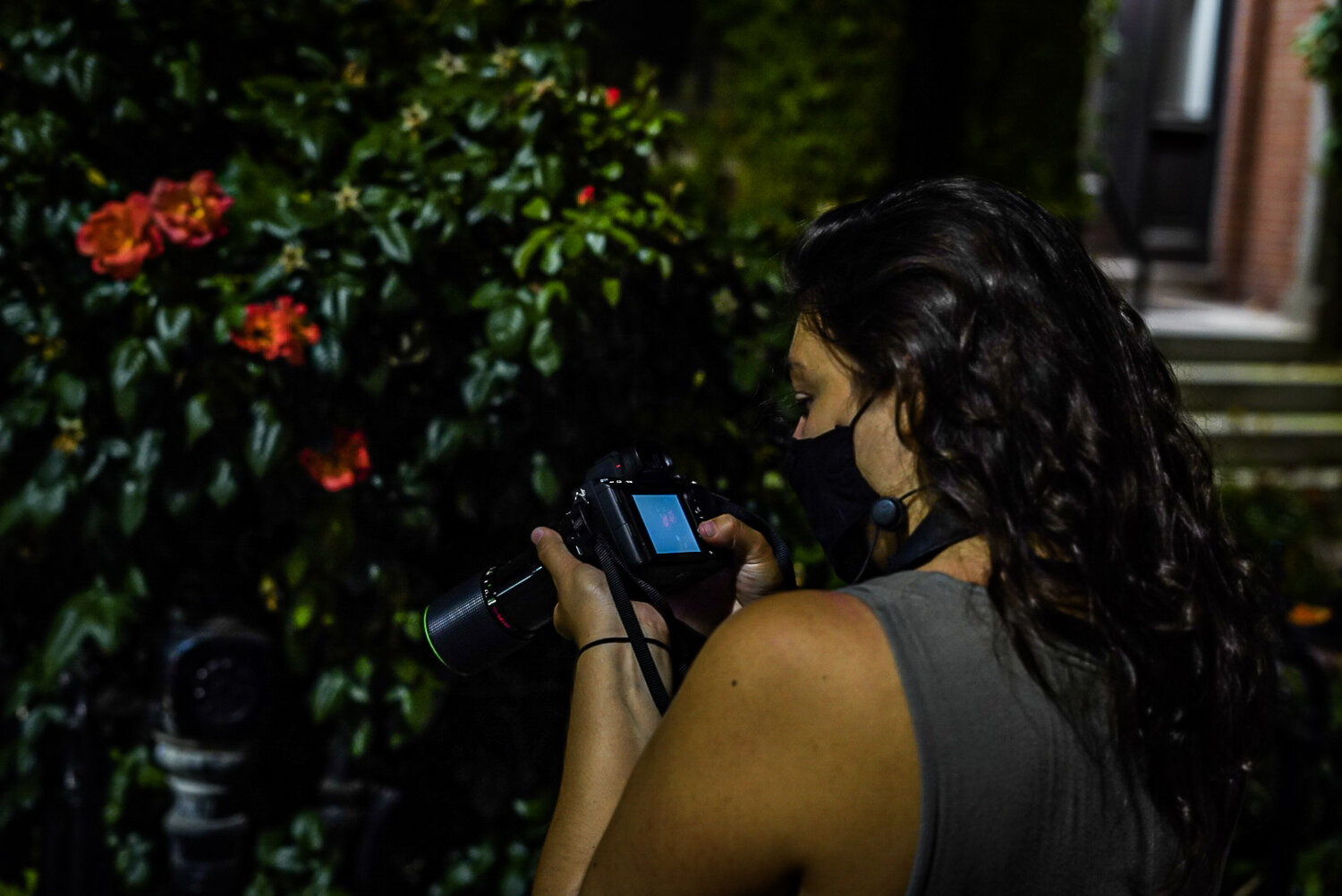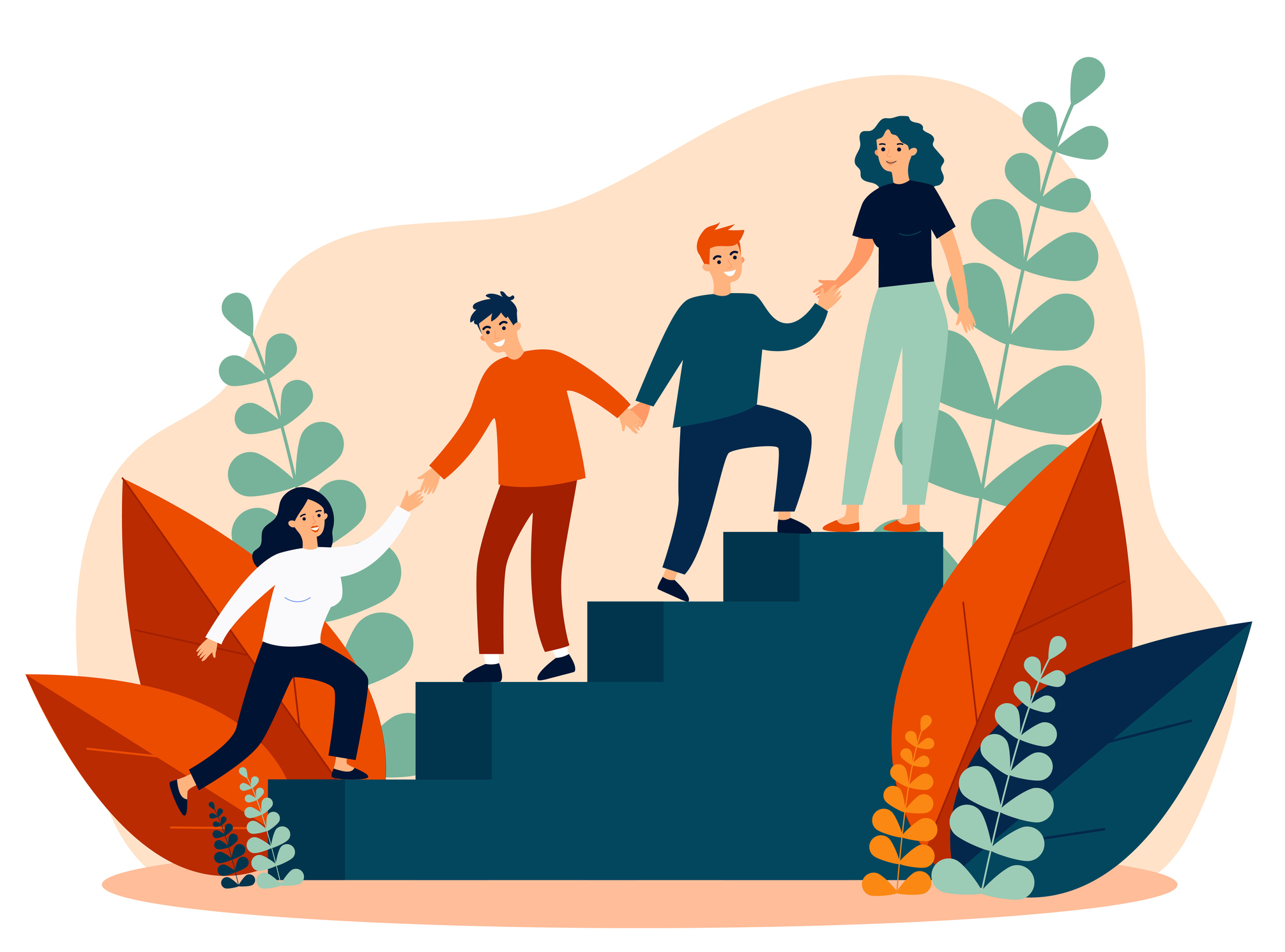We are pleased to announce our Spring 2024 interns at A&BC! Our internship program is…

An Interview with Multimedia, Multidisciplinary Artist Stephanie Houten
Interview conducted on September 23, 2020. Photo above by Colgan Johnson.
Natalie: Could you introduce yourself, what you do and what you’re passionate about?
Stephanie: My name is Stephanie Houten. I’m a multimedia multidisciplinary artist. I do primarily filmmaking and photography, and I also do installations, creative production, and event production. I’m very politically active, and I’m an organizer. A lot of my work is based on community engagement such as grassroots movements in the New England area. I work mostly with nonprofits and communities showing them how filmmaking can be a tool for grassroots movements to amplify their messages and accelerate campaigns. This facilitates positive change in their community and neighborhoods for their people, on their terms.
Natalie: Can you talk about your journey through the different mediums you worked with?
Stephanie: I never had access to digital video cameras until I was in college, which was not until I was about 24 years old. I didn’t go to college right after high school. I worked in the foodservice industry since I was 15. It got to a point where I didn’t want to do that for the rest of my life and I wanted something better. So, at around 23, I went to Bunker Hill Community College. I found so much community there with a lot of other working-class people of all ages and from different countries and backgrounds. I developed a lot of my musicianship at Bunker Hill, which informs a lot of my work as a visual artist.
I knew I wanted to do something in the arts, so I went to MassArt afterward. I was going to do graphic design, but after taking a film and video introduction class, I was really struck by the interdisciplinary nature of filmmaking. It’s visual, lighting, composition, and color, but it’s also sound, writing, character development, and other technical stuff. As someone who’s multidisciplinary, I was incredibly interested in that aspect of the medium, so I decided to pursue filmmaking. I was also in an interrelated media program, which was more of a conceptual art program where you focus on the idea you want to make art about and figure out the best way to deliver that idea. That’s when I got more into installation. I was feeling limited by the frame; I wanted to push further and bring it more into an interactive space. So I started to explore interactive art and started producing really technical pieces where people could go into a room and use devices to trigger art and be a part of the piece.
Natalie: What does being an artist mean to you?
Stephanie: College not only brought me on an artistic journey, but it simultaneously radicalized me and I learned a lot about the way politics work in the society we live in. That was combined with my own firsthand experience as a working-class person in the foodservice industry and my own family’s experience being made up of both immigrants and people who have lived in Massachusetts for many generations. These lived experiences, alongside being a worker, going to college, learning about institutions, bureaucracy, capitalism, and Trump being elected, all really pushed me to look at those things.
In the current day, I’ve gone from being an artist because I like to make art to being an artist because I understand art as a tool for revolutionary change. I understand that revolution is a word that has a lot of meaning. It’s political and historical connotation is often watered down, and it really needs to be examined with discipline and a scientific approach. I dedicate a lot of my time currently to political study and political education because I feel that that’s the duty I have as an artist: to use what I do as a vehicle for positive change and positive change for me means a transformation of society.
Natalie: Can you describe a certain project or community/people you worked with that really affirmed what you’re doing? Or encouraged you in knowing what you’re doing is powerful and necessary for society today?
Stephanie: The first thing that comes to mind is working with youth. In multiple instances, I’ve worked with youth through different groups in Boston, such as amazing organizations like City Life/Urbana. Working with City Life, we did a project where we had some youth in Jamaica Plain make a film about the gentrification happening in their neighborhood. I was really just there to give them a camera and show them how to use it. They did all the research, storyboarding, and idea development. Then they would tell me what they wanted to do. They wanted to do an animation. So, I showed them how to do animation. They wanted to do interviews. So, I gave them special microphones and showed them how to use them.
We went down to El Embajador, a restaurant in JP, and we talked to the people there and interviewed them so the youth could learn through the experience. I remember when we watched the film in the end, they really saw the fruits of their labor. They were like, wow, we can make things like this. Projects like these are really important to me. They are examples of how it is possible to put these tools in the hands of people who are doing the work and really activate their neighborhoods and their communities.
Natalie: As part of the creative community in Greater Boston and as a creative and arts educator, what support do you think this community would benefit from? Or how can society and different organizations provide more support?
Stephanie: I think the answer is twofold to me. I think the most important thing to me is that right now we are living in an age where the contradictions of society — which have existed for a long time — such as inequality, racism, and sexism are very clear. There’s also a lot to be said in Boston about the historical way artists, especially Black and Brown artists, have been treated in the city. I think the biggest thing that artists need to be doing right now is really taking the time to investigate the history behind these inequities and oppressions that we’re facing, because everybody faces them, just in different ways. Artists have our own specific struggles, but there are specific struggles that Black artists, women artists, queer artists, immigrant artists have that others might not. And that’s across the board, whether you’re an artist, a teacher, or a medical worker.
I think being artists, going back to that notion of how we shape culture, it’s really important for us to be unapologetic and upfront about these realities and to be really aware of the fact that art is political. There is this whole debate on if can we separate the art from the artist. Can art just be about aesthetics and not politics? In reality, it can’t because it is cultural and culture shapes society. It is inherently political, and I think that’s a big responsibility that we carry as artists. That means we have to do that work. In terms of how we can get support, I think there’s obviously a lot of support we could use materially of course. But I think the most important thing for artists is to recognize that sometimes you have to sacrifice that support to make sure you’re saying the truth and you’re saying your truth.
Sometimes these institutions and industries aren’t going to support those truths and that’s okay because that’s the work. I think that’s what can differentiate people: if you’re willing to forego that support or if you’re willing to sacrifice your truth to get those means. For some people that’s necessary and they need to do that; there is no judgment there from me. I think it’s important to recognize that there are specific conditions we live under. And as artists, we have a responsibility to depict those conditions, to speak to them, and to really accelerate and push that consciousness within people as culture workers.
Natalie: Let’s talk a little bit about the Creative Entrepreneur Fellowship program. Could you talk about the challenges you faced being an artist? When did you realize them?
Stephanie: I was running my own business for a while before the fellowship and a particular struggle I had was streamlining administrative tasks so that I wasn’t spending so much time on them. The fellowship really helped me streamline those processes and pointed me to tools that already existed instead of trying to build everything from scratch. Being in a network with other people who are also working artists was a good way to connect with others and hear about what other people are doing, even if they are working in different mediums. Being in a community is always really important because you can have that support, and it’s inspiring to be around other artists. It motivates me to do more, practice more, and to get out there.
I also got a lot of support from Volunteer Lawyers for the Arts. I think it’s a huge resource for artists because a lot of us are patching jobs and making things work. Historically, artists are undervalued and underpaid. That’s why access to legal support is a huge thing. I would have never had access to legal support if I didn’t have the fellowship.


